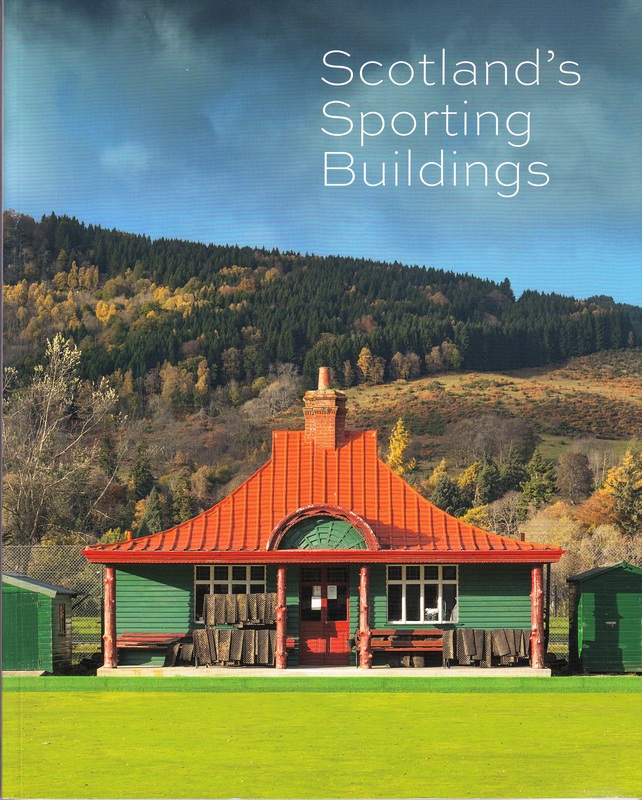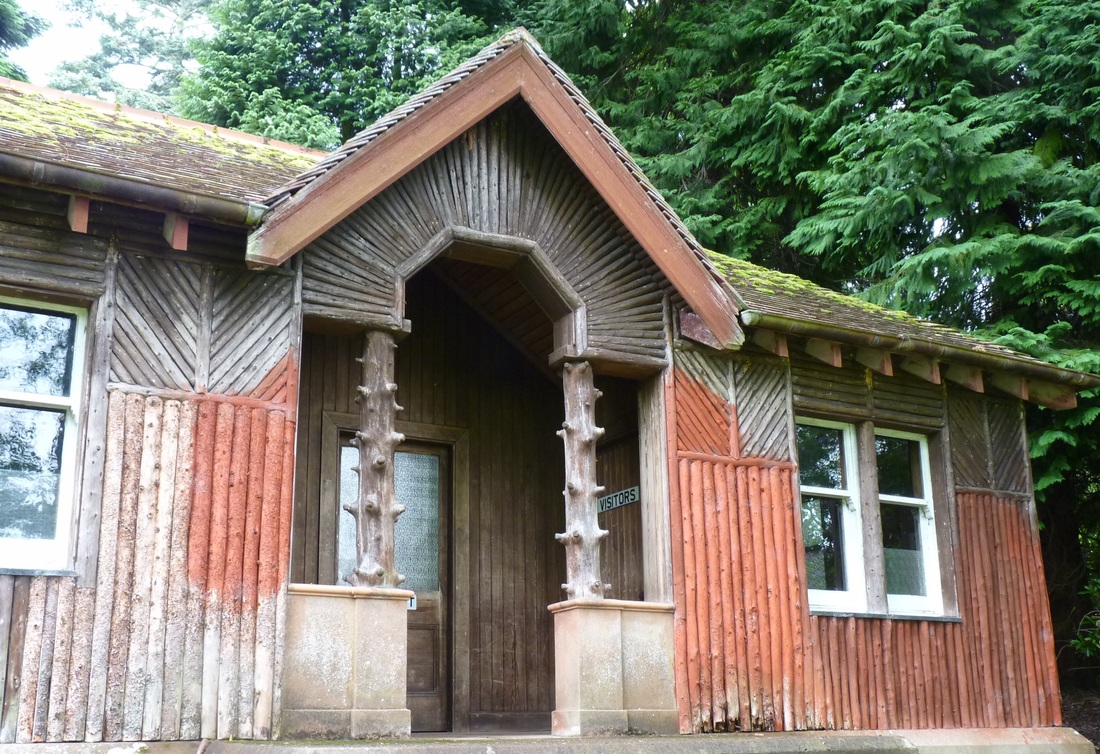Scotland’s Sporting Buildings admits to being more of a primer than a definitive guide, showcasing buildings and pavilions chosen by author Nick Haynes (the book gives no explanation as to who he is, but a quick web search reveals he is a historic buildings consultant based in Edinburgh).
He has compiled an interesting selection. Some are famous but many are not. They stand out in their environment for a variety of reasons: the innovative, the quirky, the imposing and the cute. The oldest surviving work of sporting architecture in Scotland is the royal tennis court at Falkland Palace (1539-41). There are some stunning swimming pools from the Victorian splendour of Arlington Baths to the Royal Commonwealth Pool in Edinburgh. Bowling, cricket, golf and curling all have hidden gems, my own favourite being the Grange Cricket Club’s two tier pavilion.
There is a lot packed into Scotland’s Sporting Buildings, but frustratingly a lot is also left out. Historic Scotland’s review itself is not referenced; in fact it seems not to have been published anywhere. Instead of the inordinately long (and obscure) bibliography, it would have been much more informative and useful to include at least an index of Scotland’s listed sporting buildings.
The author chose to omit several sports, most surprisingly rowing which has an impressive architectural heritage, but even within the book’s stated scope there are surprising pictorial gaps. Hampden Park, our national stadium, is nowhere to be seen. For a book using the Commonwealth Games as its hook, where is Meadowbank Stadium and Velodrome? Also missing are Archie Leitch’s designs at Tynecastle and Dens Park, not to mention the fine stand at Firhill (actually Tynecastle appears in an aerial photo of Murrayfield but is not even acknowledged in the caption).
They are certainly not omitted through lack of space. Despite the stated aim not to feature buildings less than 30 years old, there are images of the Sir Chris Hoy Velodrome and Celtic Park, while several photos are not of buildings at all: an early tennis player, the 1877 Scotland rugby team, ancient trophies and portraits – all nice to look at but really not relevant. There are a few errors which a proof reader should have picked up: eg Celtic formed in 1877 (p52), and footnotes in the rugby chapter which don’t relate to their numbers.
But what really struck me was the almost complete absence of human beings from the photos. The swimming pools, the football terraces, the bowling greens are all devoid of people, sterile and empty. Without players and spectators, what use are these buildings?
For anyone interested in the subject of sports architecture, there will be an inevitable comparison with the Played in Britain series, and in particular Ged O’Brien’s Played in Glasgow, and it has to be said that this book comes off a distant second.
Scotland’s Sporting Buildings is published at £11.99.
Historic Scotland has provided this welcome feedback to the above review, which answers some of my criticisms:
As this is the first in a new series of books we are producing your feedback is very welcome and we will take it into account for future titles.
You noted that the nationwide review of sporting buildings which the Listing and Designed Landscapes Team at Historic Scotland undertook and which informed this book has not been published. In fact it is published online in the form of the listed building records which were updated or created as part of the project. You can search for these on our website at:
http://www.historic-scotland.gov.uk/historicandlistedbuildings
I’ve pulled out a couple of examples below for your interest, the Grange Cricket Club which had its category of listing changed from B to A as part of the project in recognition of its national importance and Abdie Curling House in Fife which was newly listed at category B as a result of the project.
http://data.historic-scotland.gov.uk/pls/htmldb/f?p=2200:15:0::::BUILDING,HL:43497,grange
http://data.historic-scotland.gov.uk/pls/htmldb/f?p=2200:15:0::::BUILDING,HL:52182,abdie
We thought long and hard about having an index of listed sporting buildings at the end of the book. The issue for us in doing this is that as soon as it is printed it would be out of date. The list of buildings of special architectural or historic interest changes almost daily with buildings coming on to the list, being removed from the list or having their category of listing and/or descriptions changed. As the database of listed buildings is already searchable online we took the difficult decision that it would be a more appropriate source for that type of information.
The remit of the review of sporting buildings and consequently the book was concentrated on public sporting buildings. This is because while there are a great many sporting buildings on private estates these need to be looked at in a slightly different way from more standalone public sporting buildings. Those on private estates are part of a wider complex of buildings often including such diverse structures as a large country house, lodges, walled gardens, stable blocks, home farms etc and in many cases there is a particular architectural style of period for those buildings and they need to be considered as a group in themselves. We decided that sporting buildings on private estates would best be reviewed as part of reviews of those individual estates. This explains some of what you mentioned as omissions, there are numerous listed boathouses on country estates for leisure (again not within the scope of the book as this is not a competitive sport) but very few and not enough to make up a chapter which are directly associated with competitive rowing.
You mentioned disappointment that the Rossie Priory Cricket Pavilion is not in the book. It is in fact mentioned briefly on page 40. As it is on a private estate and would be best considered within that type as noted above it was not part of the study. It is not listed in its own right but might be considered by the local authority to be curtilage of one of the many listings on the Rossie Estate, the local authority would need to give a view on this. You can see the listings at Rossie Priory using the map-based search facility at Pastmap:
http://pastmap.org.uk/
However, anyone can propose a building for listing and if you would like to propose the Cricket Pavilion for listing we would be delighted to hear from you. You can download our proposal form here:
http://www.historic-scotland.gov.uk/index/heritage/historicandlistedbuildings/listingproposal.htm
In relation to the typo about Celtic’s date of founding we definitely hold our hands up to that one – proofreading will be as rigorous as possible in the next titles.


 RSS Feed
RSS Feed